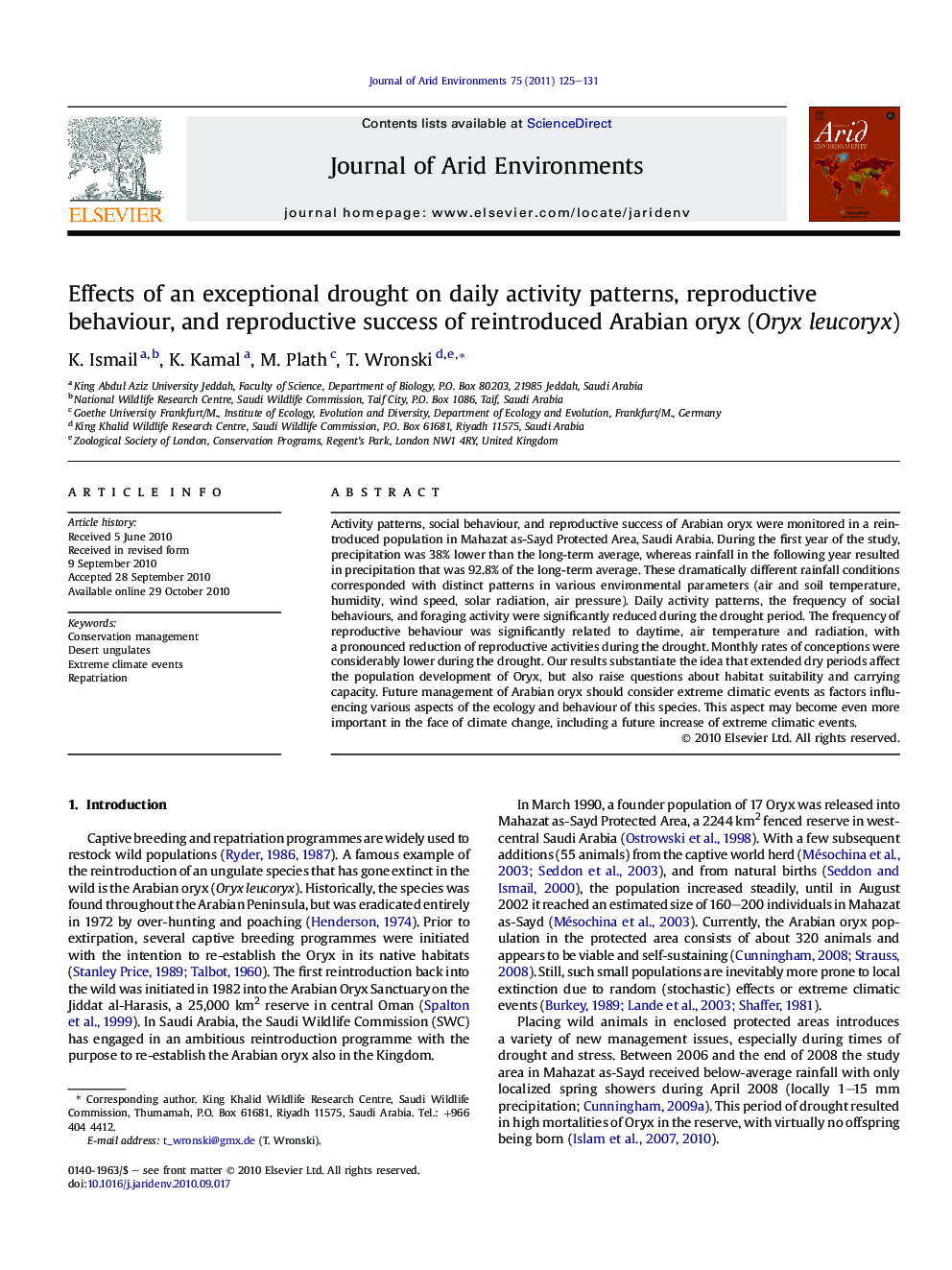| Article ID | Journal | Published Year | Pages | File Type |
|---|---|---|---|---|
| 4393599 | Journal of Arid Environments | 2011 | 7 Pages |
Activity patterns, social behaviour, and reproductive success of Arabian oryx were monitored in a reintroduced population in Mahazat as-Sayd Protected Area, Saudi Arabia. During the first year of the study, precipitation was 38% lower than the long-term average, whereas rainfall in the following year resulted in precipitation that was 92.8% of the long-term average. These dramatically different rainfall conditions corresponded with distinct patterns in various environmental parameters (air and soil temperature, humidity, wind speed, solar radiation, air pressure). Daily activity patterns, the frequency of social behaviours, and foraging activity were significantly reduced during the drought period. The frequency of reproductive behaviour was significantly related to daytime, air temperature and radiation, with a pronounced reduction of reproductive activities during the drought. Monthly rates of conceptions were considerably lower during the drought. Our results substantiate the idea that extended dry periods affect the population development of Oryx, but also raise questions about habitat suitability and carrying capacity. Future management of Arabian oryx should consider extreme climatic events as factors influencing various aspects of the ecology and behaviour of this species. This aspect may become even more important in the face of climate change, including a future increase of extreme climatic events.
Research highlights► Activity patterns, social behaviour and reproductive success of Arabian oryx were monitored during 16 months in a reintroduced population in Saudi Arabia. ► Severe drought conditions reduced the daily activity pattern, the frequency of social interactions and the foraging activity of Arabian oryx. ► The frequency of reproductive behaviour was significantly related to daytime, air temperature and radiation with a significant reduction during the drought period. ► Extreme climatic events, habitat suitability and carry capacity must be considered when managing introduced populations of desert ungulates in fenced protected areas.
